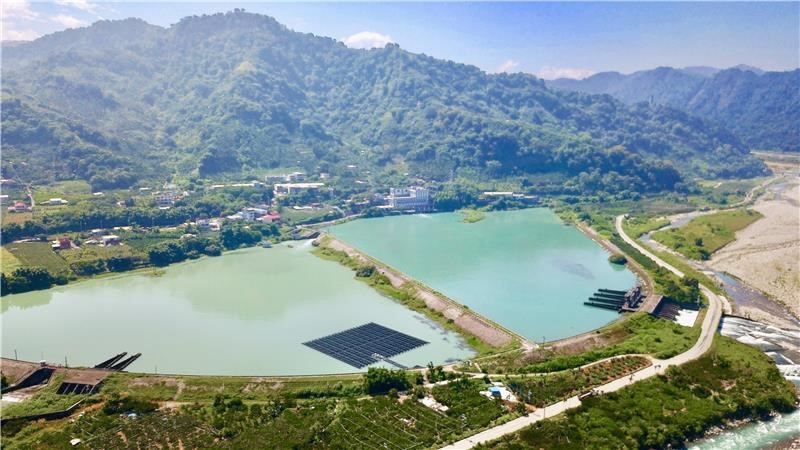Taipower's first floating solar PV plant- the ‘Dual Green Energy Power Plant' built on Dajia River has been launched. Dajia River Hydropower Plant is the largest hydropower plant in Taiwan. Its power generation reached 2.3 billion kwh of electricity last year, which accounts for more than 40% of hydropower generation in Taiwan. Taipower now even utilizes the existing space and excellent sunshine in Ma'an Hydroelectric Dam to install the first floating solar PV plant, the launch ceremony of which was conducted today (20180810). Taipower said that the installed capacity of Ma'an Hydroelectric Dam Floating Solar PV Plant is 300 kW and has been synchronized in parallel in March. The estimated annual electricity output is 380,000 kwh, which is the equivalent of the monthly energy consumption of more than 1,000 households.
Taipower held the launch ceremony for the first floating solar PV plant in Dajia River Hydropower Plant Ma'an Dam this afternoon. Taipower pointed out that Dajia River Hydropower Plant utilizes the water resource of Dajia River through seven power plants/generator-sets built along upstream and downstream of Dajia River, which include Deji Reservoir, Qingshan Dam, Guguan Reservoir, Tianlun Dam, Ma'an Dam, Sheliao hydropower station and Houli hydropower station. The accumulated power generation has already exceeded 55 billion kwh since the plant was built. It also provides water for household, industrial and agricultural uses in Taichung metropolitan areas. The new floating solar PV plant was built in Ma'an Hydroelectric Dam, which is normally used to control electricity production and downstream water consumption. Its favorable factors for the maintenance and management of floating solar PV power generation system include sufficient sunshine supply, no shading effect of surrounding buildings, shallow water and flat terrain as well as stable water levels. Therefore, Taipower constructed Taiwan's first ‘Dual Green Energy Power Plant' here by combining hydropower and floating solar PV power, by which 1.23 million metric tons carbon dioxide (CO2) emissions can be reduced per year.




